Cherry Chocolate is a relatively young grade of culture. It was led in 1996 by Russian breeders due to crossing such varieties such as black and loving lots. This fruit culture received its name thanks to berries, which, after ripening, acquire a dark burgundy color and visually resemble chocolate. Consider all the features of planting and caring for the tree in more detail.
Cherry Chocolate: variety description
The tree reaches a length of 2.5 m. The branches of the straight brown color are covered with a grayish rode. The kidneys have a cone-shaped shape, tightly pressed to run. In size, they reach 4 mm. Matte green leaves with sharp base and rounded upper part. Cherry inflorescence consists of three white flowers.
The crown shape is similar to an inverted pyramid. Chocolates refers to early grades, its fruits ripen in the average numbers of July. The period of fruiting begins for 4 years after landing. From one tree you can collect 11-11.5 kg of harvest. The weight of the berry is 3-4 g. The form of fruits rounded, and the color of the pulp is dark red. If we consider the taste of the cherry of chocolates, then you can see the presence of a sweet taste and a slight presence of sour.
Cherry chocolate. Photo:
How to choose a place
The most suitable environment for the cultivation of this culture is neutral or weakly acidic soils, enriched with nutrient elements and possessing a good drainage system. In the soils with high levels of humidity, the chocolate man comes around. The cherry of this variety can be called a light-lubricant culture, because It requires a sufficient amount of sunlight. Therefore, it is very responsible for the selection of space for landing.
The tree is planted on a well-illuminated area, avoiding shaded zones. In the shadow, the chocolateper is also able to grow and fruit, but its yield is significantly reduced. The benefits of this variety include resistance to low temperature and drought. Cherry retains its viability in the conditions of frost and lack of moisture. However, note that these factors do not have a positive effect on the culture, so care should be adpermed.
Rules landing
In addition to the cherry seedling, you will also need twine, shovel and count. Landing is carried out in the spring or autumn. The most suitable months for this are April and September. Experienced gardeners advise to choose the spring, as it will give the opportunity to protect the young tree from frosts. The planting process is as follows:
- Work begins with a row in the ground cola.
- Then on Earth draw a circle corresponding to the size of the future recess.
- First, the pit is digging 60 cm deep and 80 cm in diameter. The soil revealed as a result of this is mixed with organic fertilizers - humus and ash, after which it is poured on the bottom of the prepared deepening.
- Next to the pit on the top layer of the soil you need to put a seedling and straighten its roots.
- Then the root system falls asleep ground and watered. To do this, it is recommended to use resistant water.
- The neck of the root after landing should be located 3-4 cm above the soil level. If the upper part of the seedling started, it should be trimmed. But it is impossible to remove more than third part of the plant length.
- A mixture of humus and sawdust sput around the trunk. Near the root system, the soil must be a little tamper.
- Next, next to the seedlings are rowed, to which the trunk of a tree is attached.
Cherry Chocolate: Care
In order for the chocolate girl to delight gardener with a rich harvest with large fruits, it is necessary to adhere to certain rules for the care of the plant. The main ones can be attributed:
- Chocolateman is capable of self-poll, but in order to increase the amount of harvest, it is recommended to plant pollinators near her. For this, the cherries of other varieties or sweet cherries will suit. When landing several trees of this variety, it is necessary to observe the space between them in 2-3 m.
- During the year, the cherry grows by 0.7 m. Care of this culture involves making fertilizers, soil loosening, removal of weed plants, trimming, as well as carrying out activities aimed at protecting wood from pests and diseases.
- Watering the tree begin at the flowering stage and when ripening berries. The total amount of fluid, which is poured under the cherry during this time, is 30-40 liters.
- If the soil enriched in nutrients was introduced during the landing in the pit, the culture does not need fertilizers.
- Plant care should be started in spring from the moment of vegetation. During this process, the chocolate man consumes a large amount of nutrient elements, so their content in the soil must be filled.
Fertilizers for cherry
For normal vital activity, cherries are required both organic and mineral components. In the autumn period, the soil under the tree is drunk and 70-80 g of potassium and 200 g of phosphate fertilizers are deposited.
Once for 2-3 years, compost or humus is used before Popile. In the spring, nitrogen fertilizers contribute to the soil in the amount of 60-70 g. This may be urea or ammonium nitrate.
Throughout the growing season, jerk is performed twice. The first time the cherry should get the nutrient components at the end of flowering, the second - 13-15 days after this period. The composition for feeding is prepared as follows:
- 10 liters of cowboat and 1 kg of ash are added to 50 liters;
- the resulting mixture is insteaded for 4-6 days;
- further, 5 l compositions are poured under the tree, then 3 water buckets.
The feeder is prepared on the basis of mineral fertilizers. For this, 15 g of potassium and urea chloride and urea, and the superphosphate in the amount of 25 g are added to the water-filled bucket, as well as the superphosphate in the amount of 25 g.
Pruning cherry
Variety chocolate needs pruning. This procedure contributes to the correct formation of the crown, an increase in the volume of harvest, the removal of sore branches and the rejuvenation of the tree. Pruning should be made every year in the spring and in the autumn period. It is starting to spend from young age, and if necessary, it is performed immediately after landing.
In the spring, the cherry is cut into the first numbers of March. It is necessary to proceed with this process before the start of the juice. Features of the procedure are reduced to such factors:
- Initially removed branches in the central part of the crown. Those are too close to each other and make it difficult to penetrate sunlight.
- Cropped branches whose growth is directed to the trunk, as well as patients and having cracks.
In the fall, this procedure is carried out from September to November. At this time, large branches that prevent the development of cherries are removed. Autumn trimming is carried out once every three years. It is not recommended to crop trees after the first vegetation. This will weaken their branches, as a result of which the culture will lose their resistance to frost. Pruning, carried out in the autumn period, is prophylactic. Dry and sick branches are subject to removal.
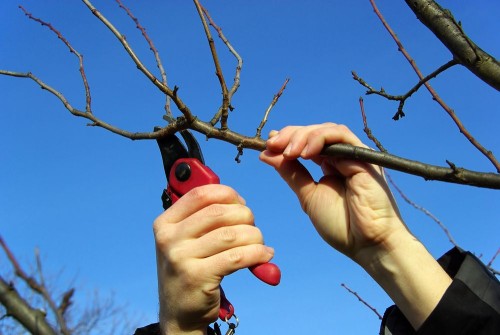
Diseases of Culture
An important step in the process of care is the prevention and treatment of fungal diseases that are subject to bone cultures. It did not exception and the cherry chocolate, the description of which indicates its instability to these diseases. Trees are exposed to kokkomicosis and moniliosis. You can recognize these diseases by the following features:
- The cockery is primarily affecting the leaves on which magenta small spots are formed. On the back, you can detect the spore fungus, they have a kind of pink plaque.
- The leaves affected by this disease are falling before the time. Such a cherry is difficult to endure frosts, and next year without appropriate treatment may die.
- Fungal disputes are placed on berries. At the same time, the deformation of the fruits begins, and they become unsuitable for use.
- The cherry affected by moniliosis, outwardly resembles a tree burned fire. At the initial stage of the disease on the branches and the crust, gray mossoid spots appear.
- Subsequently, similar manifestations can be seen on the fruits. In the absence of the necessary treatment, the whole surface of the cortex is covered with fungus, and it cracks. Branches and berries dry out, after which they die.
A tree affected by these diseases is treated with the following funds:
- In case of coccording, the cherry is treated with a three-percent solution of the Bordeaux fluid at the stage of the appearance of new leaves.
- Before flowering, the culture is sprayed with the drug "Sorrow", and after this period - the chlorokis of copper weak concentration.
- In the fall, one more treatment is carried out using any of the listed drugs.
- With damage to culture, moniliosis initially need to collect all the sick berries and branches. The fungus can hide under a healthy bark. If a new wave of the disease arises if it is missing. For this reason, when removing branches, 10-15 cm of a healthy part are captured.
- Prior to the beginning of the flowering period, the tree must be treated with a special means. To do this, you can choose a three-percent composition of the iron mood, borobo liquid, oleokuprit, nitrafen or copper vigor.
Preventive measures will help prevent the development of fungal diseases. Twice a year, wood strains and soil near it should be handled with lime mortar. In the event of the appearance on the cherry, the cracks are cleaned and smeared the garden Warr. In order for the culture to resist diseases, it must be done in a timely manner.
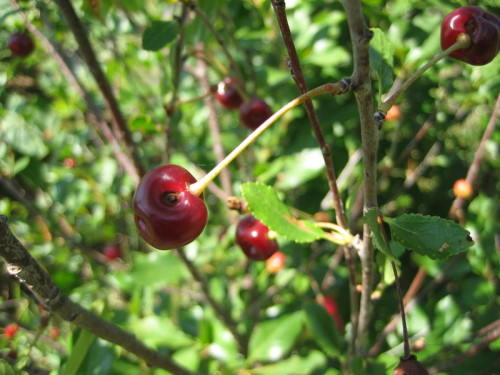
Methods of breeding
The reproduction of cherry crops is carried out in two ways:
- stalling;
- vaccinate
To implement the first method, you need to prepare a 10 cm deep box and a size of 25x50 cm. It is filled with a mixture of peat with sand. Components are mixed in equal amount. Peat can be replaced with chernozem. The soil mixture is poured first with a weak solution of potassium of mangartage, then water. Moisturize the soil should be moderately. In the opposite case, water will accumulate at the bottom of the box, which will lead to cuttings.
They harvest them at the end of June, at this time there is an intensive growth of shoots:
- The cuttings are cut with well-developed, growing up green shoots. After trimming, they need to be sealed with water. The upper part of the escape is poorly rooted, so it is removed. The required length is 10 cm.
- The upper cut should be located above the kidney, and the bottom under it. The cuttings of 2-3 cm are minced into the ground mixture, observing the distance of 6-8 cm.
- The box is covered with a film. Under it is formed the necessary level of humidity, which contributes to rooting of shoots.
- The cuttings poorly carry the straight sun rays, but they need good lighting. When the roots appear, the film is periodically removed. At first they do it for a short period, then gradually increase the time gap. This procedure allows you to harden shoots.
- For the winter, the cuttings are cheered, and the spring is planted.
Another way to grow seedlings is the vaccination. In the fall in the soil placed cherry bones. With the onset of spring will appear shoots that need to be switched. Between them there should be a space of at least 20 cm. In the fall, germs are feeding and weighing plants. The next year in the spring during the swelling of the kidney is carried out with a cutlets.
Conclusion
Chocolate has certain advantages that occupy a significant place in the description of Cherry varieties. This fruit culture is distinguished by the resistance to low temperature, the ability to be fronding in drought conditions and high levels of yield. The weak side of the cherry is its exposure to fungal diseases, but compliance with preventive measures will allow to keep the tree healthy.
Features of planting cherry:

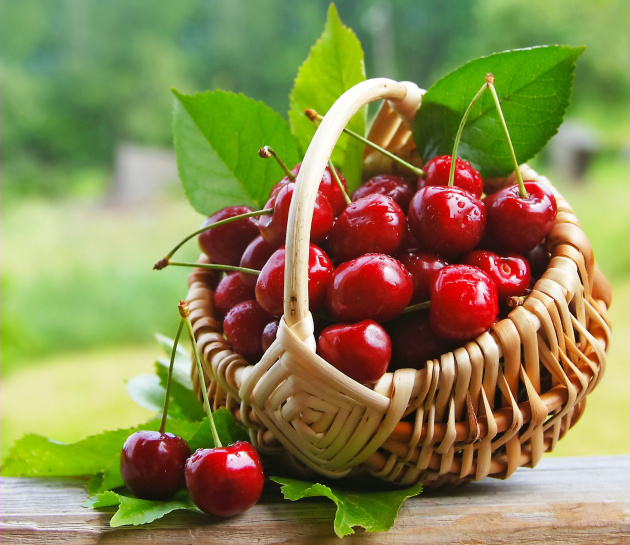
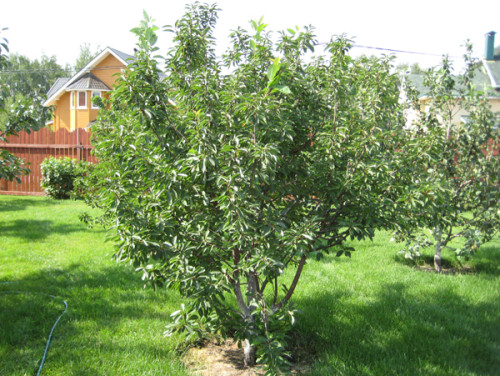
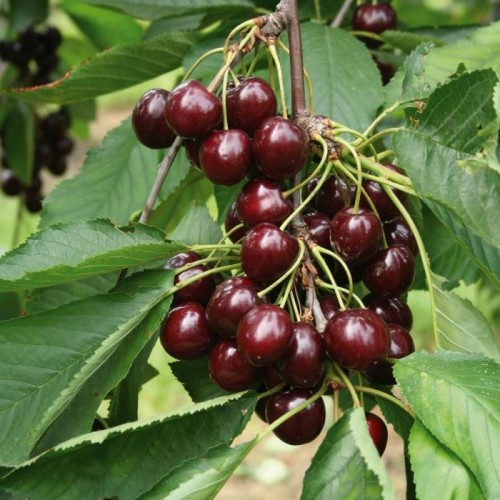
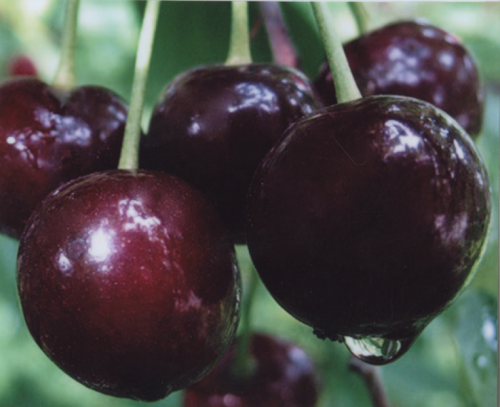
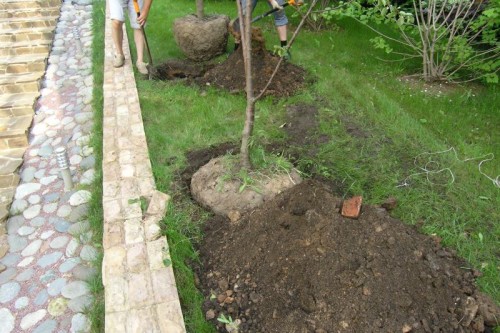
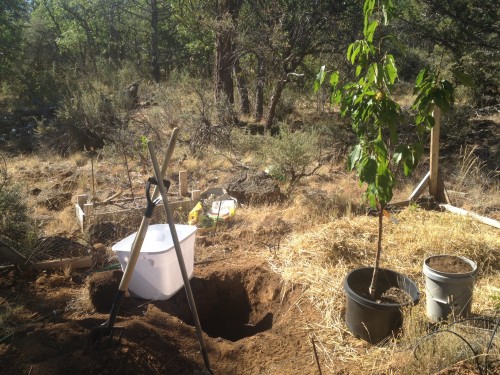
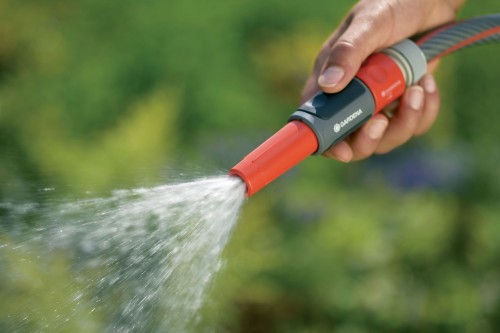
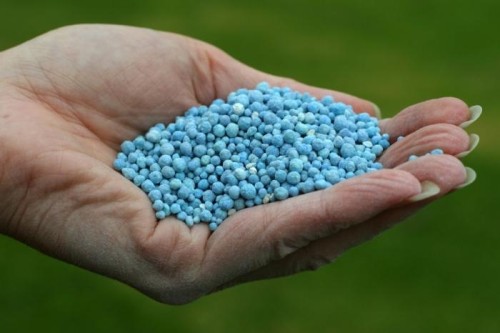
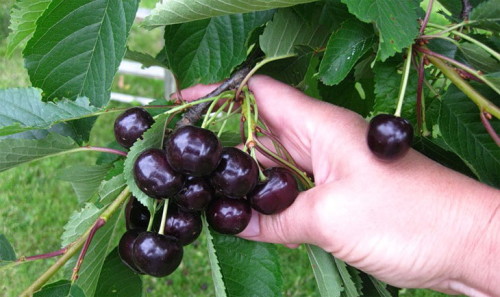












 Start a discussion ...
Start a discussion ...